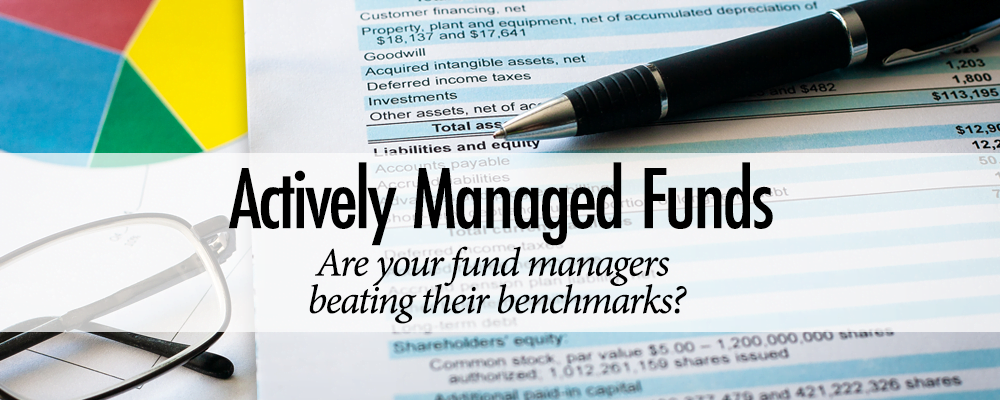A growing number of investors are using passive funds in lieu of actively managed investments. The shift to passive is being influenced by an overwhelming amount of historical data that shows active managers are not beating their benchmarks. This recurring underperformance in actively managed funds is due in part to excessive fees and higher than necessary taxes incurred by trading within the funds. This was a leading topic of interest I discussed with fellow panelists at the recent Markets Group’s Private Wealth DC Metro Forum.
Fees: Operating an actively managed fund is expensive; there are highly compensated fund managers (think millions annually), paid researchers, and ongoing commissions paid to advisors representing the funds. This, coupled with a market that has historically supported high fees means that the average expense ratio (the total internal cost of a fund annually) can be as high as 2 percent more annually than passive funds. The headwind that high expense ratios create make it difficult for active managers to beat the market, i.e. the S&P 500. If an investor with $1,000,000 averages a 7 percent return annually for 20 years, the impact of expenses would be as follows:
| Annual Expense Ratio | Initial Investment Amount | Ending Investment Amount |
|---|---|---|
| 0.20% | $1,000,000 | $3,717,803 |
| 0.70% | $1,000,000 | $3,362,486 |
| 2.20% | $1,000,000 | $2,480,005 |
Taxes: Investments in non-qualified accounts can exacerbate an investor’s tax circumstances if there is a lot of trading occurring annually. The turnover percentage (how many stocks or bonds are bought and sold during the year) is more often than not much higher in actively managed funds versus passively managed funds. Passive investments frequently mirror existing indexes, like the S&P 500. Typically, a passive fund makes no changes to the underlying investments, until the index makes a change (an example of this is when the S&P 500 removes a company from the index and replaces it with another company).
When an investor backs out the taxes paid due to securities sold in their funds, actively managed investments will typically experience a more negative impact on after-tax returns. The following chart shows historical returns for a widely used, actively managed, short duration bond fund with an average annual turnover rate of 67 percent:
| Timeframe | Annual Return Percent | Annual Return Percent Net of Taxes |
|---|---|---|
| 1 Year | -1.13 | -2.66 |
| 5 Years | 1.67 | 0.02 |
| 10 Years | 3.69 | 2.00 |
*historical analysis assumes average capital gains rate of 15%
When it comes to investment performance, there are very few things investors can control. Two easy steps are: focusing on reducing the overall expenses of the portfolio and minimizing taxes by selecting low-turnover investments. Contact PBMares Wealth Management to see how making even the slightest change today, could mean a substantial increase in savings over time.





